Japandi—a hybrid aesthetic combining the modern-rustic vibe of Scandinavian design with the traditional elegance of Japanese minimalism—is quickly becoming one of the most popular trends in interior design. This style emphasizes a blend of form and function that brings serenity and simplicity into the home.
You may also like: Wabi Sabi Design Principles Explained
Featured Video showcasing Japandi Interior Design Style
Ten essential elements that define Japandi interior design
1. Minimalism
At the core of Japandi style is a minimalist approach, focusing on less being more. The spaces are clutter-free and composed with each item carefully chosen for both function and form. The minimalist approach promotes a peaceful and calming environment, essential for relaxation and contemplation. This philosophy is evident in every aspect of a Japandi home, from the streamlined Japandi furniture to the strategic placement of a Japandi coffee table and Japandi dining table. Each piece is selected not just for its aesthetic but for its ability to enhance the overall simplicity and functionality of the space.
The influence of Japanese design and Wabi-Sabi principles further enriches the Japandi style, where beauty is found in imperfection and authenticity. In a Japandi living room or Japandi bedroom, minimalism is more than an aesthetic; it’s a way of living that encourages a slower, more thoughtful approach to the everyday. The use of natural materials and subtle textures in Japandi furniture adds layers of depth and warmth to the minimalist decor, creating inviting spaces that are both practical and serene. This careful balance of minimalism, along with a deep respect for craftsmanship and nature, defines the tranquil and purposeful atmosphere of Japandi homes.
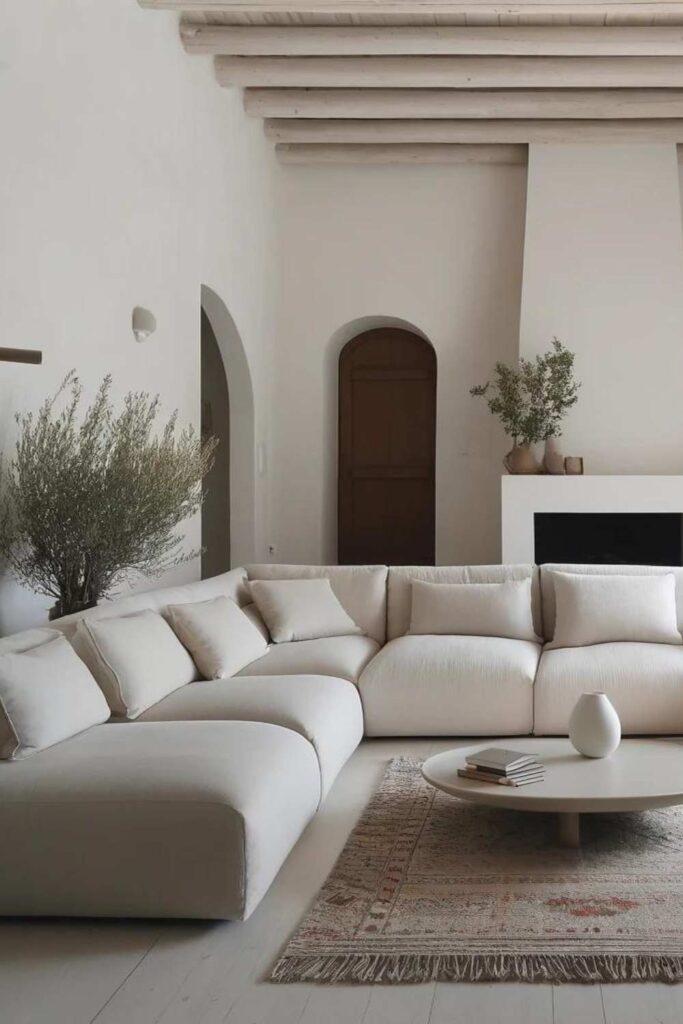
2. Natural Materials
Japandi interiors are built around natural materials such as wood, stone, bamboo, linen, and wool. These materials are chosen for their organic beauty and are often left in a state that highlights their natural imperfections. The use of these materials fosters a deeper connection to nature, which is a cornerstone of both Japanese design and Wabi-Sabi philosophy. In a Japandi home, elements like a Japandi coffee table crafted from raw, unpolished wood or Japandi furniture featuring simple, clean lines enhance the feeling of tranquility. This direct approach ensures that the spaces not only look inviting but also feel grounded and authentic.
The emphasis on materials such as bamboo and linen in Japandi style contributes to an atmosphere of calm and simplicity, critical for achieving the minimalist aesthetic associated with Japandi design. For instance, a Japandi dining table may be paired with linen-covered chairs to promote a sense of understated elegance, while wool throws and bamboo accents add texture and warmth to a Japandi living room or Japandi bedroom. By integrating these tactile materials, Japandi interiors create a space that is not only visually balanced but also rich in natural elements, reflecting a deep respect for the environment and a commitment to sustainable living practices.
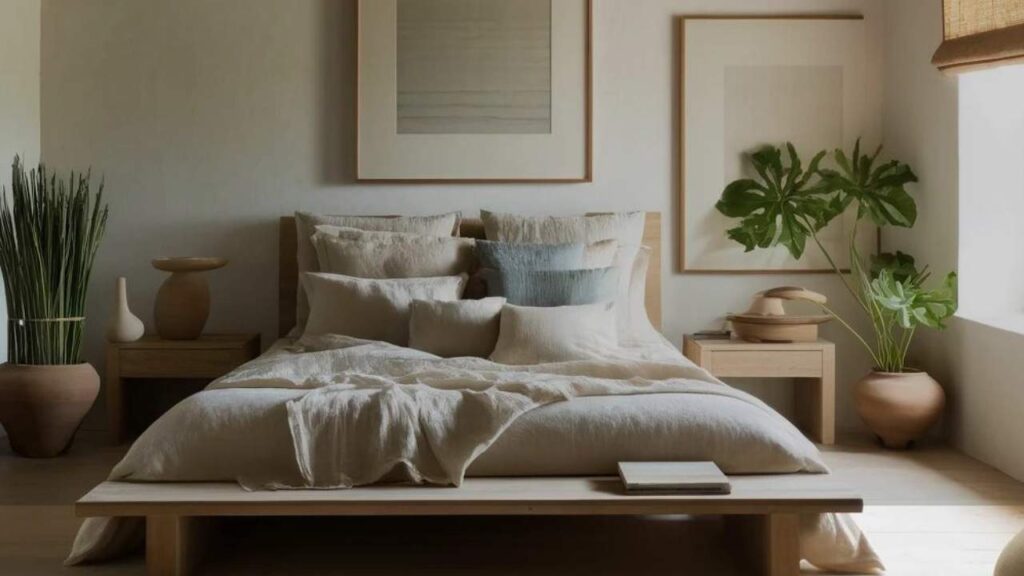
You may also like: Biophilic Interior Design Style Guide
3. Neutral Color Palettes
Muted color schemes dominate Japandi interiors, with soft greys, warm whites, and earthy tones creating a calm and inviting atmosphere. These colors help to produce a visually cohesive and soothing environment.
4. Functional Furniture
Furniture in Japandi design is not only stylish but also highly functional. Pieces often feature clean lines and a simple, elegant aesthetic. The functionality is key, as the style adheres to practical simplicity and comfort. Japandi furniture, whether it’s a Japandi coffee table or a Japandi dining table, prioritizes utility without sacrificing form. This philosophy extends to every item, from storage units that double as aesthetic pieces to modular sofas that can be reconfigured as needed, ensuring that each element within a Japandi living room or Japandi bedroom serves multiple purposes while maintaining a serene and uncluttered environment.
The materials used in Japandi furniture further emphasize its functionality and style. Natural woods with a soft, muted finish not only bring warmth to interiors but also highlight the sustainable aspect of Japandi design. For instance, a Japandi coffee table might be designed with built-in compartments or drawers to minimize clutter, combining sleek, modern lines with traditional craftsmanship. In Japandi dining rooms, tables and chairs are often designed to be both comfortable and compact, reflecting the Japandi style’s core values of efficiency and understated elegance. This approach ensures that every piece of furniture not only looks good but also enhances the livability of the space.
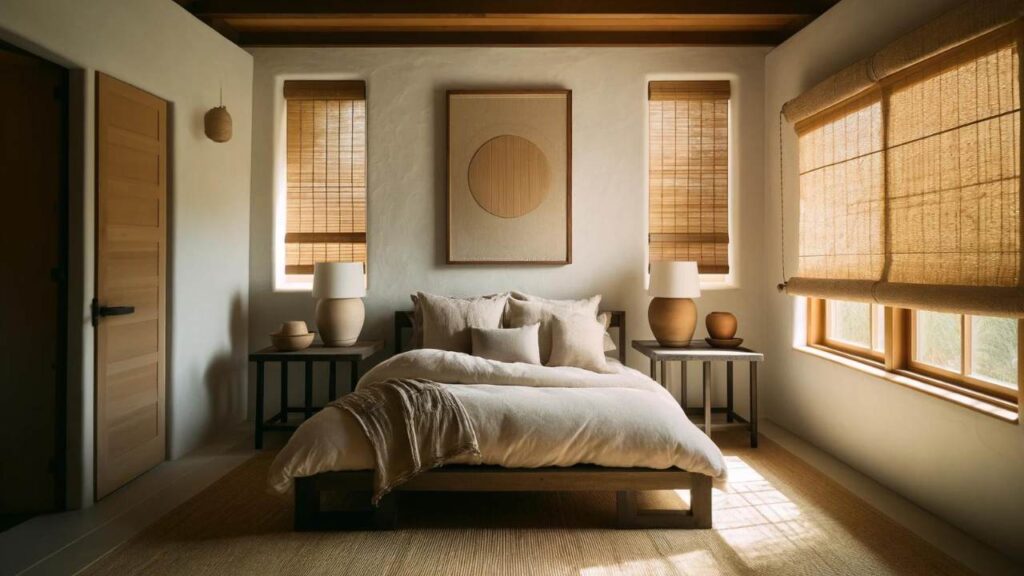
You may also like: Wabi Sabi Decor Guide
5. Wabi-Sabi (Embrace of Imperfection)
The Japanese concept of Wabi-Sabi, which finds beauty in imperfection and impermanence, plays a significant role in Japandi style. This might include a cracked ceramic vase or a roughly finished wooden table, each telling a story of imperfection. In a Japandi home, such elements are not only accepted but celebrated, as they embody the authentic essence of both life and nature. Japandi furniture often showcases this aesthetic through intentional asymmetry or the use of raw, unrefined materials that highlight the inherent flaws and textures of nature. The Wabi-Sabi philosophy encourages a deeper appreciation for the aging process and the unique story each piece brings to the Japandi interior design.
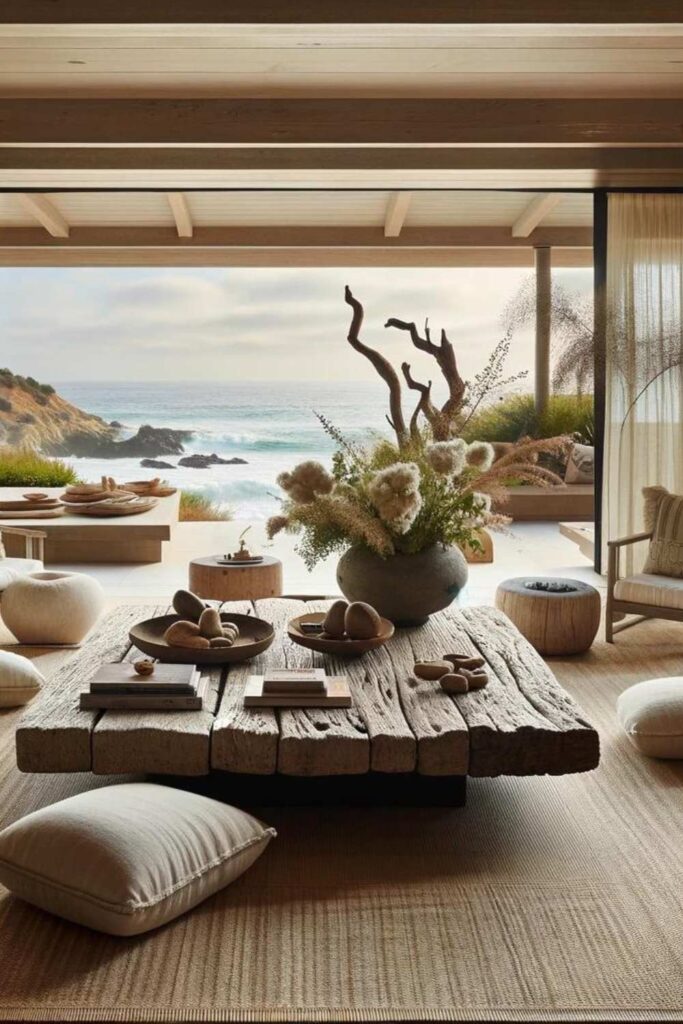
Incorporating Wabi-Sabi into Japandi living rooms or Japandi bedrooms involves choosing pieces that reflect the beauty of natural decay, such as a Japandi coffee table with visible knots and grain or a Japandi dining table with an unfinished surface. These pieces foster a sense of peace and organic harmony, reinforcing the Japandi style’s commitment to minimalism and tranquility. This approach is not about seeking perfection but embracing the perfectly imperfect, aligning with the principles of both Japanese design and minimalism. In doing so, Wabi-Sabi interior design not only enhances the aesthetic value of the home but also serves as a constant reminder of the transient nature of life.
6. Craftsmanship and Quality
Japandi design values high-quality, artisanal pieces over mass-produced items. There is a strong emphasis on craftsmanship, with a respect for the art of making things by hand, which ties into the design’s minimalism by choosing fewer, but better-quality pieces.
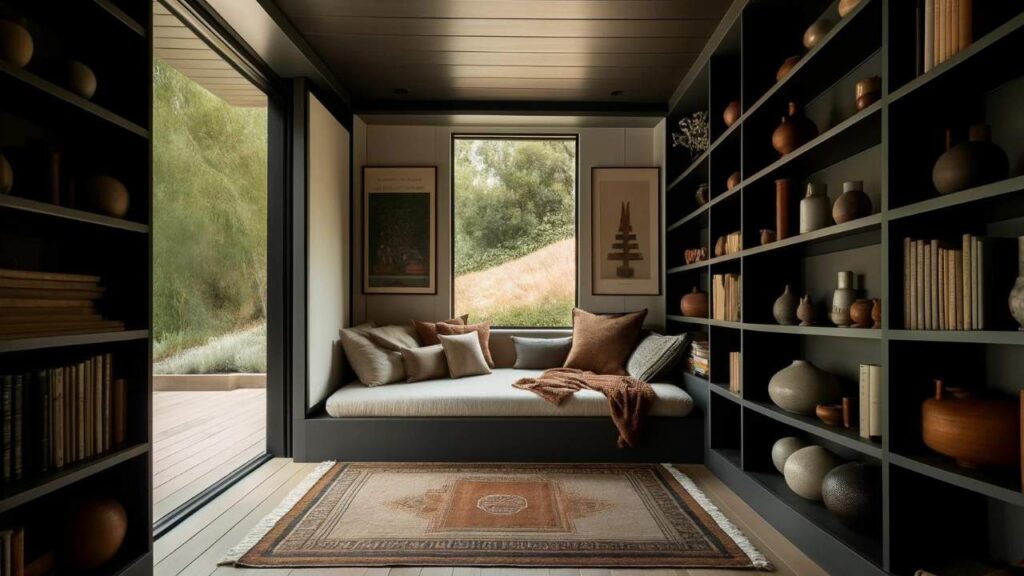
7. Contrasting Textures
To add depth and interest within the minimalist spaces, Japandi style incorporates a mix of contrasting textures. For example, a smooth, soft linen sofa throw might be paired with a rough, natural wood coffee table.
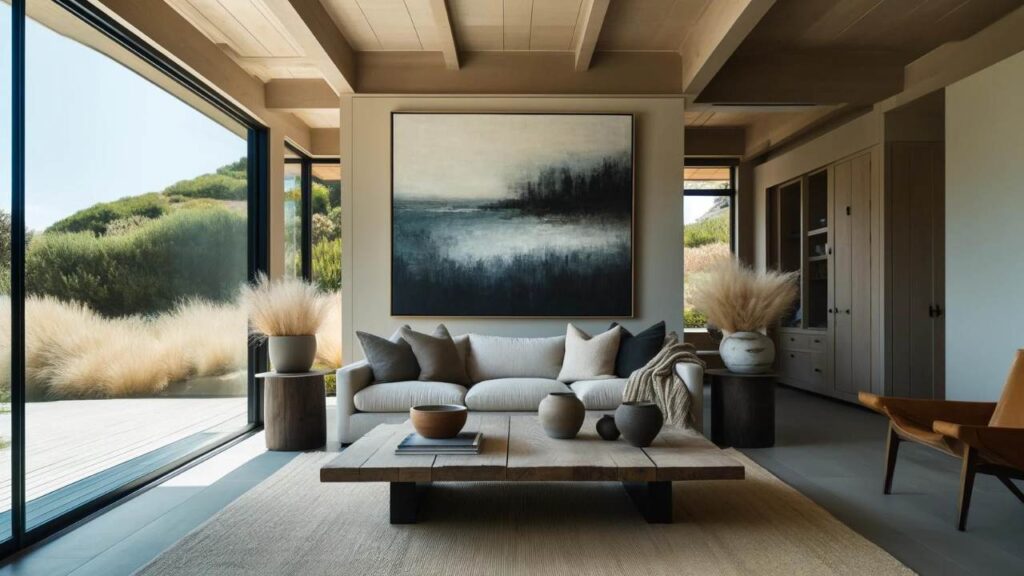
8. Subtle Use of Color
While the overall palette is neutral, there is subtle use of color in Japandi interiors. Soft pastels or deep, rich colors may be used sparingly to accentuate a space without overwhelming the senses. This strategic use of color helps to enhance the serene and minimalist aesthetic of a Japandi home, where every element is thoughtfully selected to create a harmonious environment. In a Japandi living room or Japandi bedroom, you might find a muted blue throw pillow or a soft sage green vase that adds just the right touch of color, complementing the natural hues of Japandi furniture like the Japandi coffee table and Japandi dining table.
The application of these colors is carefully considered to maintain the balance and tranquility that are hallmarks of both Japanese design and minimalism. Rather than using bold, striking colors, Japandi style focuses on tones that evoke calmness and relaxation, reflective of Wabi-Sabi interior design where beauty is found in simplicity. These subtle hues support the visual ease and aesthetic cleanliness of the space, making the Japandi home not just a place of dwelling but a sanctuary of peace and understated elegance.
9. Light and Airy Spaces
Ample natural light and open, airy layouts are integral to Japandi design. Large windows, often unadorned or with simple treatments, help to merge the indoors with the outdoor environment, enhancing the minimalist layout.
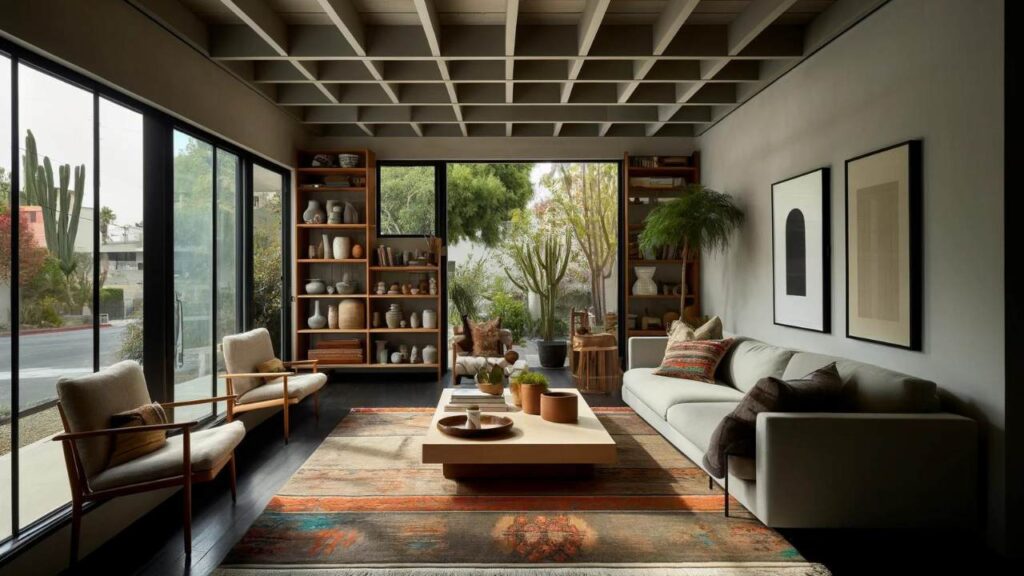
10. Indoor Plants and Greenery
Greenery is another essential element of Japandi design. Indoor plants like bonsai trees, bamboo, and other green plants are used not just as decorative elements but as integral components that bring life and a sense of tranquility to the space.
By integrating these ten elements, you can transform your living environment into a Japandi-inspired retreat, embracing both Scandinavian functionality and Japanese aesthetic to create a space that is as beautiful as it is tranquil.
Conclusion
Japandi—a hybrid aesthetic combining the modern-rustic vibe of Scandinavian design with the traditional elegance of Japanese minimalism—is quickly becoming one of the most popular trends in interior design. This style emphasizes a blend of form and function that brings serenity and simplicity into the home. By embracing key elements such as minimalism, natural materials, neutral color palettes, functional furniture, and the Wabi-Sabi philosophy, Japandi interiors create spaces that are both beautiful and purposeful. The harmonious fusion of these principles results in a tranquil and inviting atmosphere, perfect for those seeking a calm and clutter-free living environment.
Whether you are redesigning a single room or transforming your entire home, incorporating Japandi elements can bring a sense of balance and peace to your space. Remember to focus on quality craftsmanship, integrate nature through indoor plants, and utilize subtle colors to enhance the overall aesthetic. With these guidelines, you can achieve a Japandi-inspired retreat that reflects both Scandinavian functionality and Japanese aesthetic, creating a home that is as beautiful as it is serene.
Japandi Interior Design Style FAQs
1. What is Japandi interior design? Japandi is a fusion of Japanese and Scandinavian design principles. It combines the sleek, minimalist aesthetic of Japanese design with the warmth and functionality of Scandinavian style, resulting in a balanced, harmonious, and uncluttered space.
2. What are the key elements of Japandi design?
- Minimalism: Clean lines and uncluttered spaces.
- Natural Materials: Wood, bamboo, and other organic materials.
- Neutral Colors: Soft, muted tones like beige, gray, and white.
- Functional Furniture: Multi-purpose pieces with simple designs.
- Nature Integration: Indoor plants and natural light.
3. How can I incorporate Japandi style into my home?
- Use neutral color palettes with occasional pops of color.
- Choose furniture with simple, clean lines made from natural materials.
- Declutter your space, focusing on functionality.
- Incorporate elements of nature, such as plants and natural light.
- Mix and match Japanese and Scandinavian decor items.
4. What colors are commonly used in Japandi design? Japandi design favors neutral colors like beige, gray, white, and soft pastels. Earthy tones like olive green, terracotta, and charcoal are also popular. These colors create a calm and serene atmosphere.
5. What type of furniture is best for Japandi interiors? Furniture in Japandi design is functional, simple, and often made from natural materials like wood and bamboo. Pieces should have clean lines and avoid excessive ornamentation. Low-profile furniture is also common, reflecting the Japanese influence.
6. Can I use modern technology in a Japandi-style home? Yes, modern technology can be incorporated, but it should be done subtly. Choose tech that blends seamlessly with the decor, such as minimalist appliances and smart home devices in neutral colors.
7. How do I achieve balance in a Japandi space? Balance is achieved by combining the simplicity of Japanese design with the coziness of Scandinavian style. Ensure that the space is not overly cluttered, use a harmonious color palette, and blend natural materials with functional, aesthetically pleasing furniture.
8. What kind of lighting is suitable for Japandi interiors? Natural light is ideal for Japandi interiors. Use large windows, light curtains, and avoid heavy drapes. For artificial lighting, choose fixtures with simple designs and warm tones to create a cozy atmosphere.
9. Are there any specific decor items that represent Japandi style?
- Tatami mats and shoji screens from Japanese design.
- Hygge elements like cozy throws and pillows from Scandinavian style.
- Simple pottery and ceramics.
- Indoor plants in minimalist pots.
10. Is Japandi design suitable for small spaces? Yes, Japandi design is particularly well-suited for small spaces due to its emphasis on minimalism and functionality. By reducing clutter and focusing on essential items, you can make a small space feel more open and serene.
11. How can I maintain a Japandi-style home? To maintain a Japandi-style home, regularly declutter and clean your space. Keep decor minimal and functional, and ensure that natural elements are well-maintained. Consistency in color palette and materials will help preserve the serene and balanced atmosphere.
12. Can Japandi style be personalized? Absolutely! While Japandi has its core principles, you can personalize your space by adding unique touches that reflect your personality. Incorporate art, textiles, or decor items that hold personal significance while maintaining the overall aesthetic harmony.

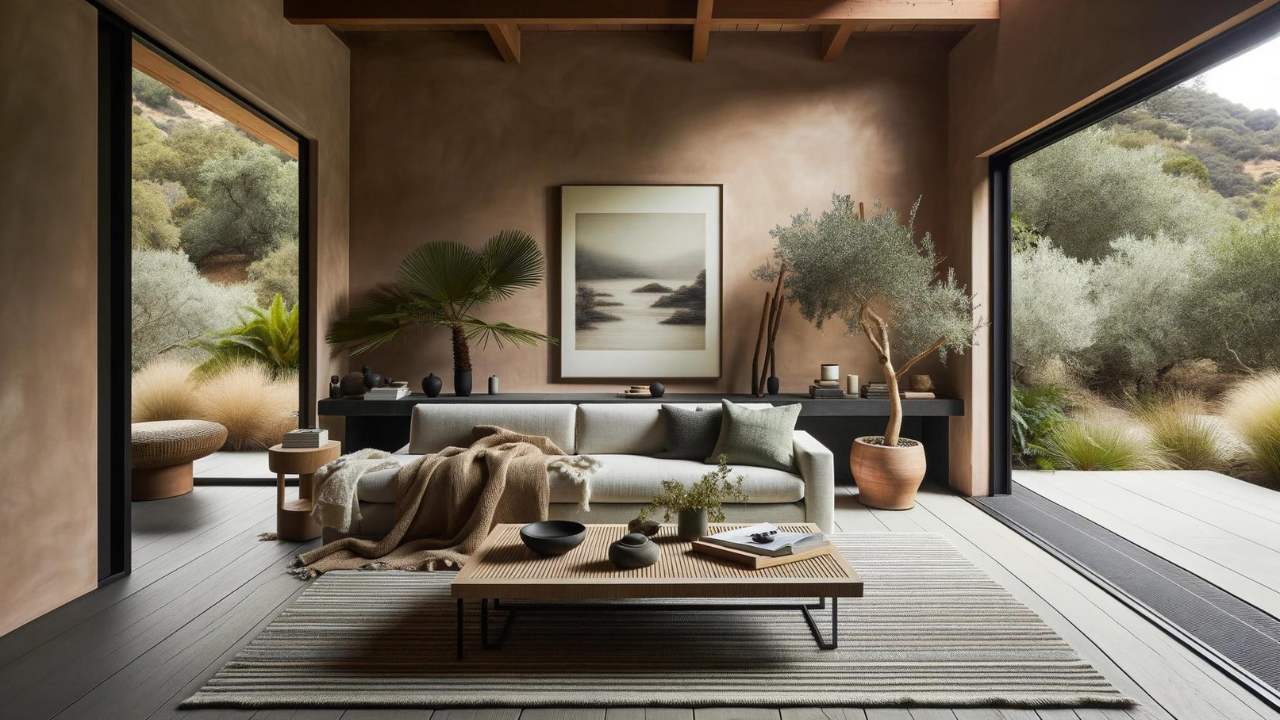
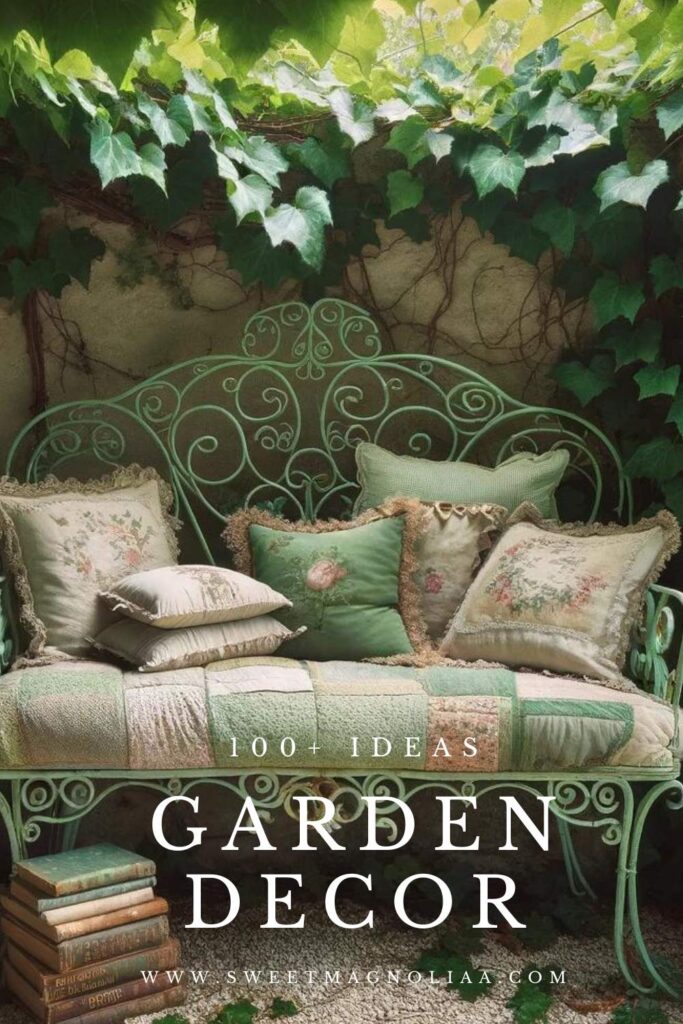
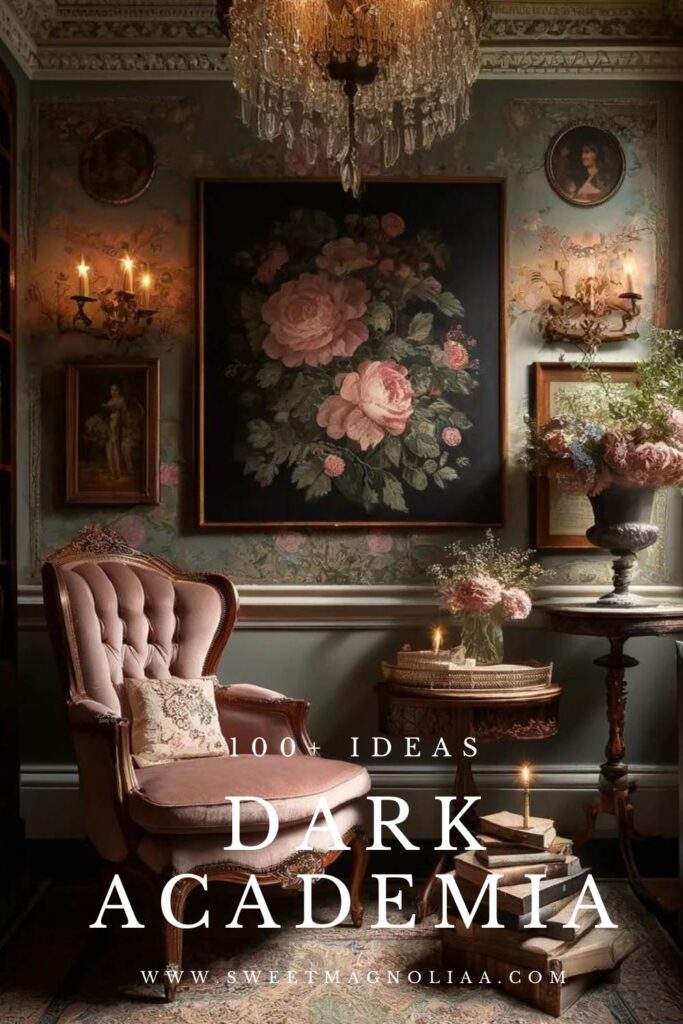
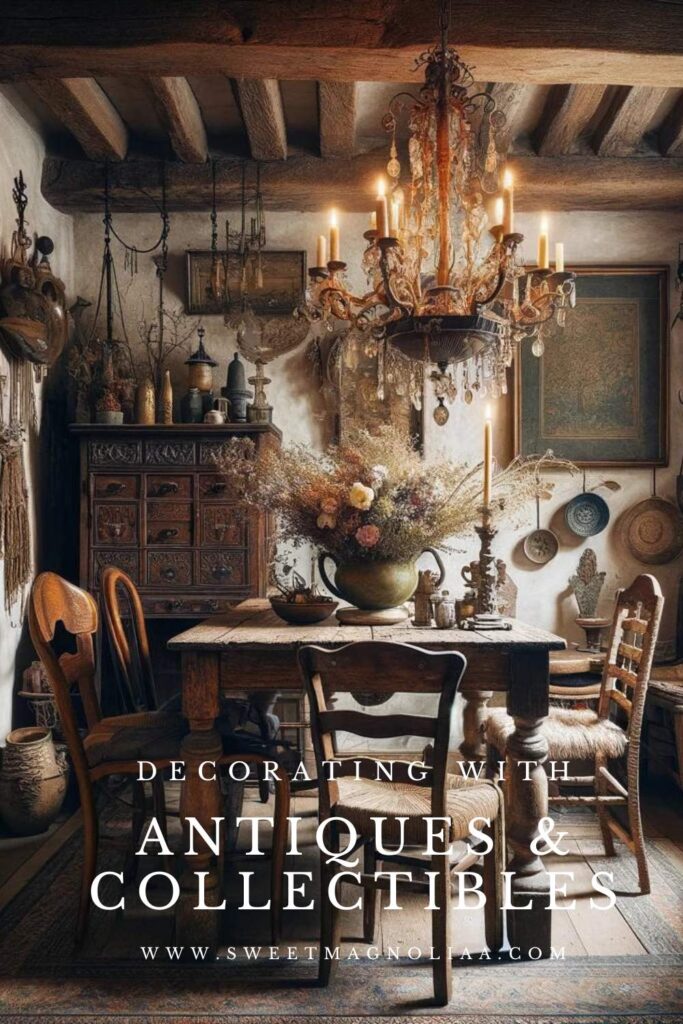
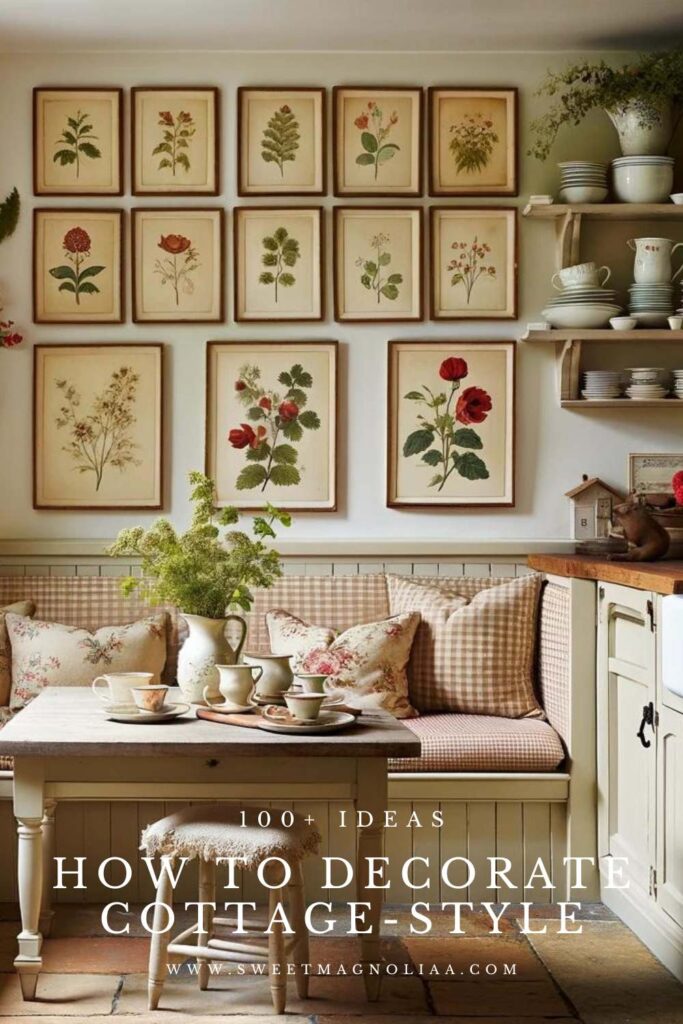
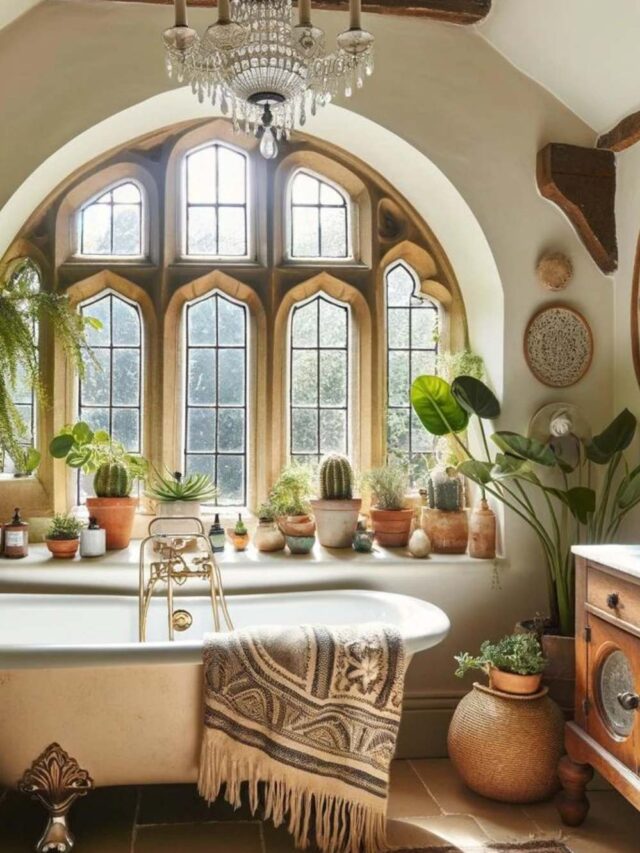
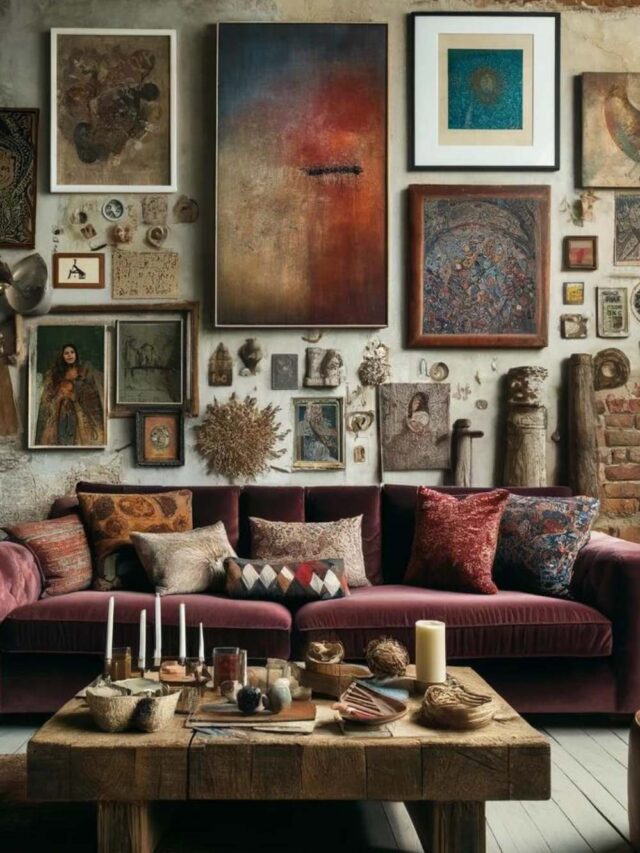
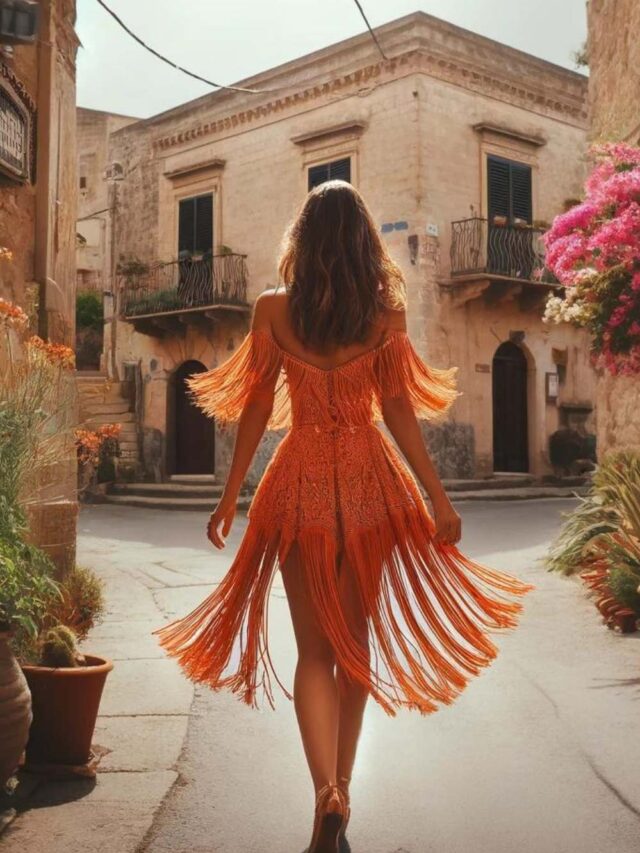
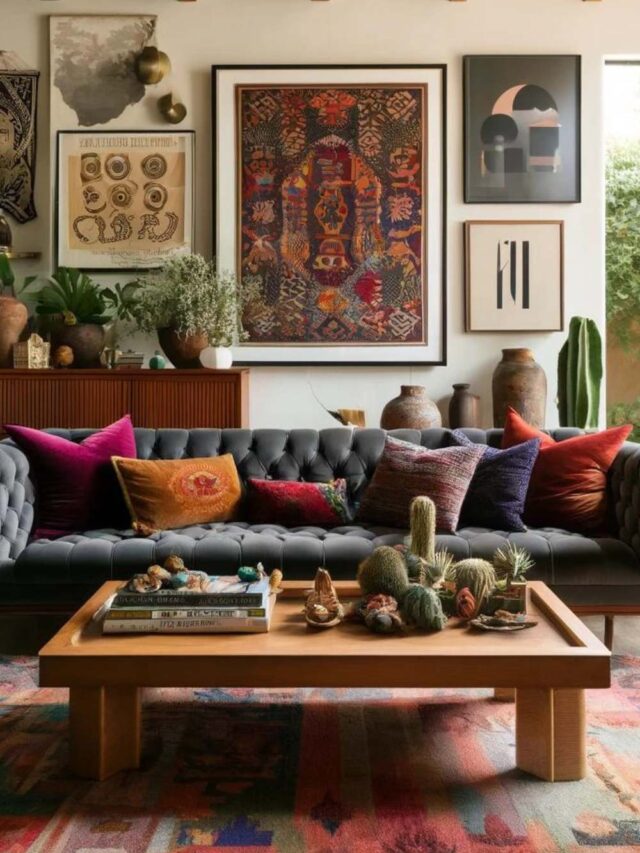
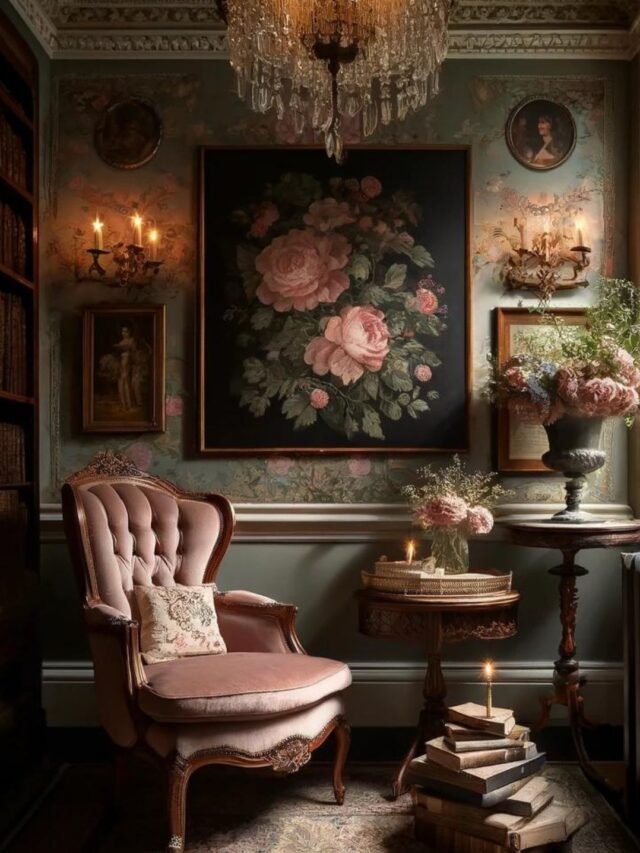
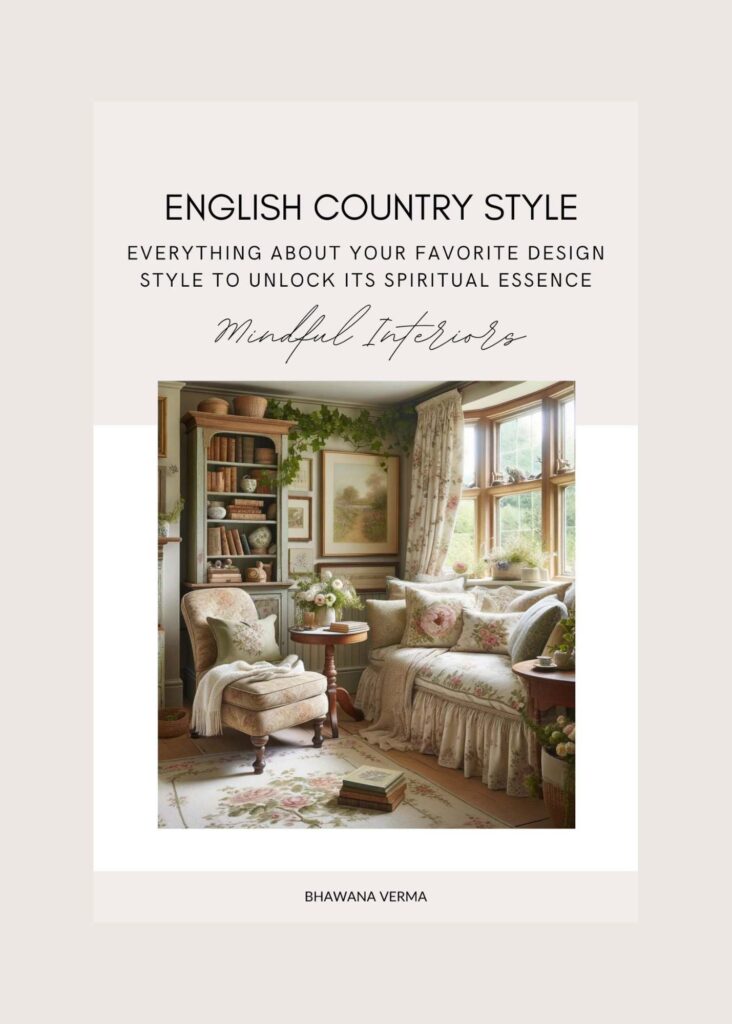
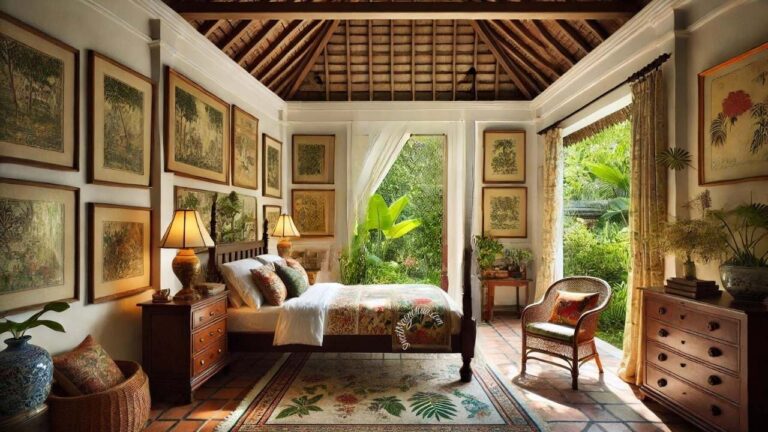
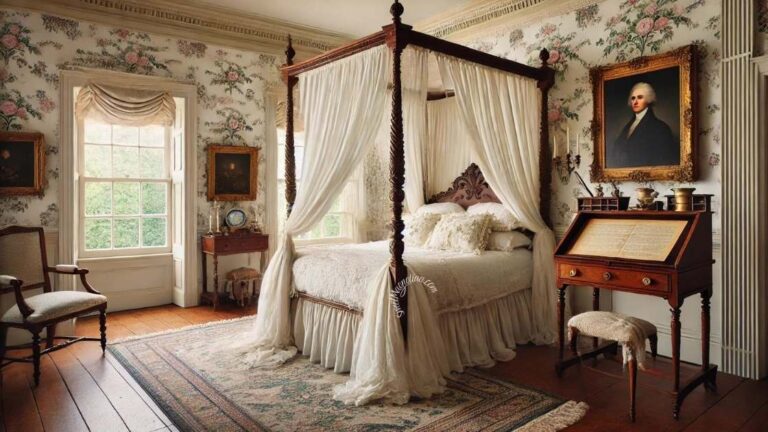
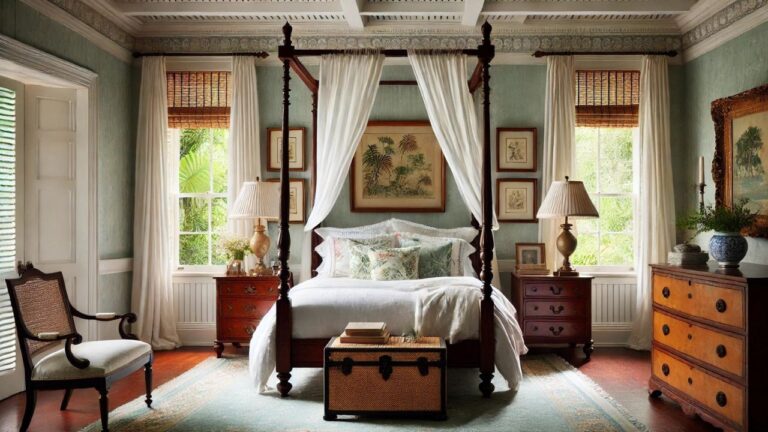




4 Responses
Saved as a favorite, I really like your blog!
Wow that was strange. I just wrote an incredibly long comment but after I clicked submit my comment didn’t show up. Grrrr… well I’m not writing all that over again. Regardless, just wanted to say wonderful blog!
Thank you so much for your kind words and for taking the time to comment—it really means a lot to us! I apologize for the inconvenience with your comment not showing up initially. We manually approve comments to keep our blog free of spam, but rest assured, your comments have been approved and are now visible. Please feel free to add more of your thoughts; we really appreciate your contributions and look forward to hearing more from you. Thanks again for your support and understanding!
You actually make it seem so easy together with your presentation but I find this topic to be actually something which I believe I’d never
understand. It seems too complicated and
very vast for me. I’m taking a look ahead on your next publish, I will attempt
to get the cling of it! Escape room lista